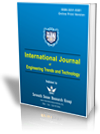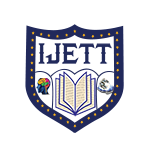Graph Database with Neo4j and the Cypher Language: An Application in Mining Companies
Graph Database with Neo4j and the Cypher Language: An Application in Mining Companies |
||
 |
 |
|
| © 2025 by IJETT Journal | ||
| Volume-73 Issue-2 |
||
| Year of Publication : 2025 | ||
| Author : Santiago Domingo Moquillaza Henríquez, Edwin Roque Tito, Juan Faustino Infantes Loo, Liliana Ruth Huamán Rondón |
||
| DOI : 10.14445/22315381/IJETT-V73I2P125 | ||
How to Cite?
Santiago Domingo Moquillaza Henríquez, Edwin Roque Tito, Juan Faustino Infantes Loo, Liliana Ruth Huamán Rondón, "Graph Database with Neo4j and the Cypher Language: An Application in Mining Companies," International Journal of Engineering Trends and Technology, vol. 73, no. 2, pp. 271-283, 2025. Crossref, https://doi.org/10.14445/22315381/IJETT-V73I2P125
Abstract
Objective of the Article: demonstrate how Neo4j, a graph database, together with the Cypher language, can be used to model and analyze complex relationships in the mining industry. It seeks to illustrate how this technology allows a clearer and more efficient view of mining operations and their global interactions. Applied Methodology: The mining system is modeled using graphs, where nodes represent key entities such as mining companies, mines, mineral types, export countries and transportation routes. The edges between these nodes reflect relationships, such as the extraction of minerals in specific mines, exports to countries, and the type of mineral transported (ferrous or non-ferrous). Cypher queries are used in Neo4j to explore and visualize these relationships. Results: The Neo4j implementation offers detailed and dynamic views of mining operations, facilitating the identification of critical patterns and relationships. Graphical visualization highlights connections and dependencies that may not be evident in traditional data models. Graph theory is applied to analyze connectivity and centrality in the data network, improving understanding and strategic decision-making in the mining sector. In summary, the paper shows the applicability of Neo4j in the mining sector using the Cypher Language in the context of graph theory.
Keywords
Neo4j, Mining sector, Graph database, Minerals, Cypher language.
References
[1] Gerson Enrique Carrillo Gelvezac, and Ixent Galpinbd, “Graph Analytics to Identify Relevant Entities and Communities in Mercado Libre: A Case Study,” Mutis Magazin, vol. 11, no. 1, pp. 77-95, 2021.
[CrossRef] [Google Scholar] [Publisher Link]
[2] Santo Fortunato, “Community Detection in Graphs,” Phisics Report, vol. 486, no. 3-5, pp. 75-174, 2010.
[CrossRef] [Google Scholar] [Publisher Link]
[3] Jonathan D. González-Barrera, and Francisco J. Rodríguez y Manuel Lozano, “Iterative Greedy Algorithms for the Maximum Diversity Clustering Problem,” VIII Spanish Conference on Metaheuristics, Evolutionary and Bioinspired Algorithms MAEB'2012, pp. 1-8, 2012.
[Google Scholar] [Publisher Link]
[4] Cristina Pérez-Solà, Jordi Conesa i Caralt, and Rodríguez González M. Elena, How to use a Graph Database?, Torrossa, pp. 1-90, 2017. Barcelona:Editorial UOC, 2017.
[Google Scholar] [Publisher Link]
[5] Renzo Angles, and Claudio Gutierrez, “Survey of Graph Database Models,” ACM Computing Surveys (CSUR), vol. 40, no. 1, pp. 1-39, 2008.
[CrossRef] [Google Scholar] [Publisher Link]
[6] Ian Robinson, Jim Webber, and Emil Eifrem, Graph Databases: New Opportunities for Connected Data, O’Reilly Media, 2015.
[Google Scholar] [Publisher Link]
. [7] T.P. Deshmukh, B.R. Bamnote, and S.W. Ahmad, “Review Paper On Complexity Reduction in Relational Database Using Neo4j Graph Database,” International Journal of Advances in Engineering and Management, vol. 2, no. 9, pp. 603-610, 2020.
[Google Scholar] [Publisher Link]
[8] Mohamed Saad et al., “A Graph Database for Life Cycle Inventory using Neo4j,” Journal of Cleaner Production, vol. 393, 2023.
[CrossRef] [Google Scholar] [Publisher Link]
[9] José Guia, Valéria Gonçalves Soares, and Jorge Bernardino, “Graph Databases: Neo4j Analysis,” Proceedings of the 19th International Conference on Enterprise Information Systems (ICEIS 2017), vol. 1, pp. 351-356, 2017.
[CrossRef] [Google Scholar] [Publisher Link]
[10] Maciej Besta et al., “Demystifying Graph Databases: Analysis and Taxonomy of Data Organization, System Designs, and Graph Queries,” ACM Computing Surveys, vol. 56, no. 2, pp. 1-40, 2023.
[CrossRef] [Google Scholar] [Publisher Link]
[11] Qinjun Qiu et al., “Information Extraction and Knowledge Linkage of Geological Profiles and Related Contextual Texts from Mineral Exploration Reports for Geological Knowledge Graphs Construction,” Ore Geology Reviews, vol. 163, pp. 1-14, 2023.
[CrossRef] [Google Scholar] [Publisher Link]
[12] Malgorzata Lazarska, and Olga Siedlecka- Lamch, “Comparative Study of Relational and Graph Databases,” 2019 IEEE 15th International Scientific Conference on Informatics, Poprad, Slovakia, pp. 363-370, 2019.
[CrossRef] [Google Scholar] [Publisher Link]
[13] Garima Jaiswal, and Arun Prakash Agrawal, “Comparative Analysis of Relational and Graph Databases,” IOSR Journal of Engineering (IOSRJEN), vol. 3, no. 8, pp. 25-27, 2013.
[Google Scholar] [Publisher Link]
[14] Jaroslav Pokorný, Michal Valenta, and Martin Troup, “Graph Pattern Index for Neo4j Graph Databases,” Data Management Technologies and Applications, pp. 69-90, 2019.
[CrossRef] [Google Scholar] [Publisher Link]
[15] Diogo Fernandes, and Jorge Bernardino, “Graph Databases Comparison: AllegroGraph, ArangoDB, InfiniteGraph, Neo4J, and OrientDB,” Proceedings of the 7th International Conference on Data Science, Technology and Applications (DATA 2018), Porto, Portugal, vol. 1, pp. 373-380, 2018.
[CrossRef] [Google Scholar] [Publisher Link]
[16] David Allen et al., Understanding Trolls with Efficient Analytics of Large Graphs in Neo4j, Gesellschaft für Informatik, Bonn, pp. 377-396, 2019.
[CrossRef] [Google Scholar] [Publisher Link]
[17] Xianyu Meng, Xiaoyan Cai, and Yanping Cui, “Analysis and Introduction of Graph Database,” 3rd International Conference on Artificial Intelligence and Advanced Manufacture, pp. 392-396, 2021.
[CrossRef] [Google Scholar] [Publisher Link]
[18] Edelina Coayla, Violeta L. Romero Carrion, and Ysabel Teófila Bedón Soria, “Economic Regulation and Environmental Impact of Large Copper Mining in the Development of Peru,” Economy, Society and Territory, vol. 24, no. 74, pp. 1-24, 2024.
[CrossRef] [Google Scholar] [Publisher Link]
[19] Ketty M. Moscoso-Paucarchuco, Manuel M. Beraún-Espíritu, and Mary A. Cárdenas-Bustamante, “Contribution of Mining in Terms of Canon and Other Royalties in Peru,” Valdizana Research, vol. 15, no. 2, pp. 57-68, 2021.
[CrossRef] [Google Scholar] [Publisher Link]
[20] Nicko Alberto Gomero Gonzales, “Transversal influence of mining commodities on the Peruvian economy under a global approach,” Quipukamayoc, vol. 29, no. 59, pp. 25-34, 2021.
[CrossRef] [Google Scholar] [Publisher Link]
[21] L. Alfredo Dammert, “The Importance of the Mining Sector for Peru,” Journal of Economics, Finance and International Business, vol. 4, no. 1, pp. 1-7, 2020.
[CrossRef] [Google Scholar] [Publisher Link]
[22] Jinhua Chen et al., “Graph Database and Relational Database Performance Comparison on a Transportation Network,” Advances in Computing and Data Sciences, Communications in Computer and Information Science, vol. 1244, pp. 407-418, 2020.
[CrossRef] [Google Scholar] [Publisher Link]
[23] D. Dominguez-Sal et al., “Survey of Graph Database Performance on the HPC Scalable Graph Analysis Benchmark,” Web-Age Information Management, pp. 37-48, 2010.
[CrossRef] [Google Scholar] [Publisher Link]
[24] Wilwer Vilca-Quispe et al., “Mining Corporate Social Responsibility and Socio-Environmental Conflicts in Peru,” International Journal of Social Science Research, vol. 17, no. 1, pp. 195-215, 2021.
[CrossRef] [Google Scholar] [Publisher Link]
[25] Viviana Soledad Verastegui Pilcon et al., “Income Tax and Profitability in the Peruvian Mining Sector from 2017 to 2021,” LATAM Latin American Journal of Social Sciences and Humanities, vol. 4, no. 1, pp. 3768-3777, 2023.
[CrossRef] [Google Scholar] [Publisher Link]
[26] Ricardo Viana Rios, “Mining in Latin America and the Caribbean, A Socio-Environmental Approach,” UDCA Journal Current Affairs & Scientific Dissemination, vol. 21, no. 2, pp. 617-631, 2018.
[CrossRef] [Google Scholar] [Publisher Link]
[27] Christian Renzo Aquino-Canchari, Katia Medalith Huaman-Castillon, and Fatima Jimenez-Mozo, “Occupational Diseases in Mining in Peru, 2011-2020,” Journal of the Spanish Association of Occupational Medicine Specialists, vol. 31, no. 3, pp. 275-282. 2022.
[Google Scholar] [Publisher Link]
[28] Oscar Junior Paredes-Vilca et al., “Pollution and Loss of Biodiversity Due to Mining and Agricultural Activities: State of The Art,” High Andean Research Journals, vol. 26, no. 1, pp. 56-66, 2024.
[CrossRef] [Google Scholar] [Publisher Link]
[29] Thomas H. Cormen et al., Introduction to Algorithms, United States of America, MIT Press and McGraw-Hill, 2001.
[Google Scholar] [Publisher Link]
[30] Mit Jain, Ashish Khanchandani, and Cajetan Rodrigues, “Performance Comparison of Graph Database and Relational Database,” pp. 1-13, 2023.
[Google Scholar]

